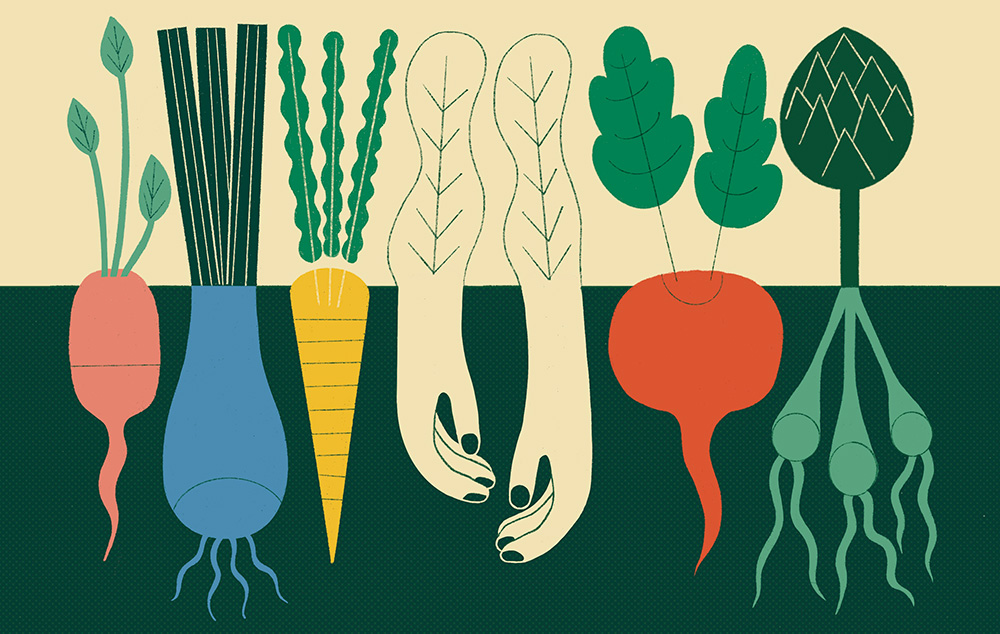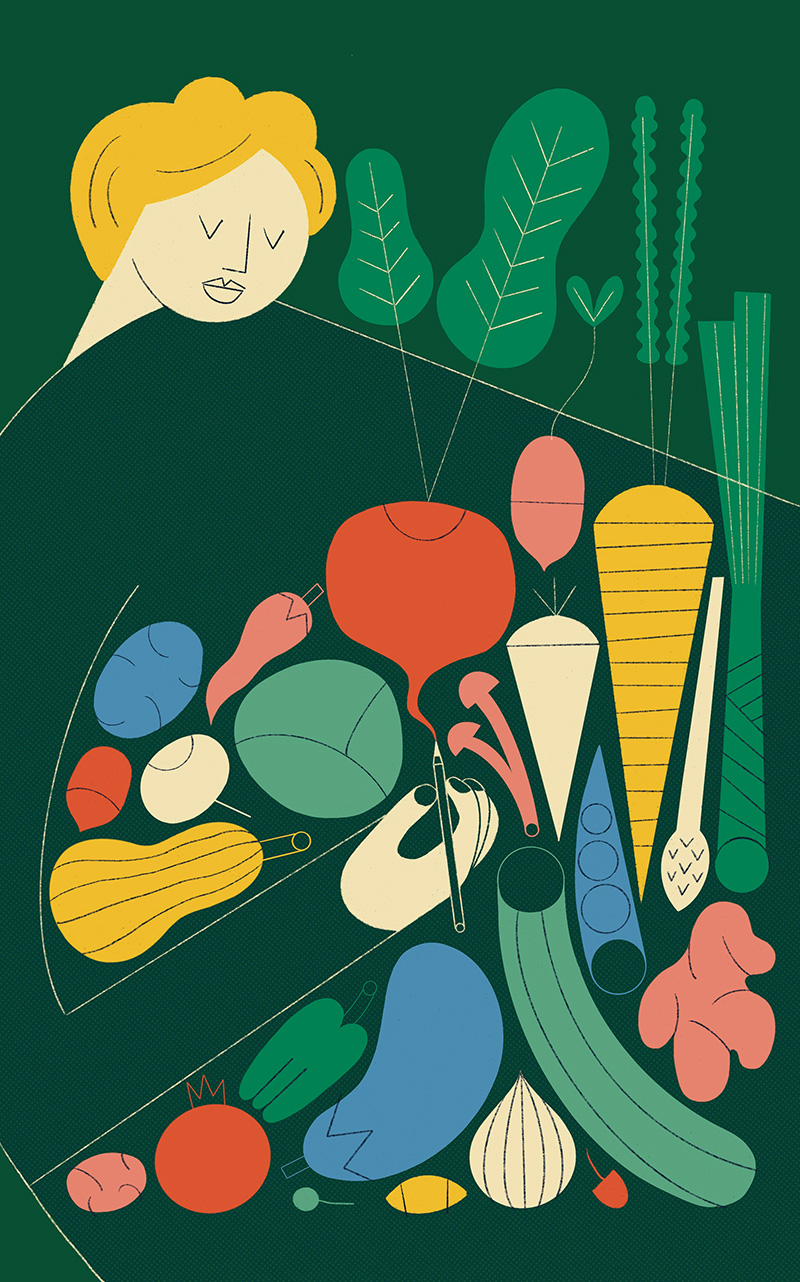“Look, Tess! The ground is cracking up!”
I still remember this tremendous sentence, though not the name of the girl who delivered it—she must have been about 7. We were standing in a makeshift greenhouse in a community garden on a reclaimed bit of railroad track examining a tray of sunflower seedlings we’d planted the week before. We were looking closely. The sprouts were unrolling from the earth, bursting free of soil. As they uncurled, some of them wore exploding seed pods like crooked hats. Others remained bent, half in, half out of earth. Growth did look like a bright, comical eruption, as if the ground were cracking and laughing at once. Soon the girl and I were laughing, too.
It was a happy summer, working as a youth instructor at the Berkeley Youth Alternatives garden in west Berkeley, Calif. It was 1997. I was a rising junior at Amherst, and my job was at a community center that had been founded to help provide food, social support and positive paths for people whose lives are, for many reasons, insecure.
To the side of a parched park, near blocks of housing for people who were clearly stretched thin, the garden was an example of possibility, transformation, abundance. When I worked there, the youth plot was thriving with produce: The teens ran a farm stand where Alice Waters, of Chez Panisse fame, had been known to buy groceries. Other times, we boxed up beets and kale and tomatoes and lemons and chard and gave them away, so that people around the neighborhood could have vegetables, free. Amid it all, that summer, and for some summers after, I was designing gardening programs for kids.
This job had come about in a sidelong way. Other Amherst students with more money or East Coast connections were setting themselves up in New York or D.C. with unpaid internships. That wasn’t something I could afford. Instead, I’d been granted a scholarship that would chip away at my work-study contribution if I’d find a meaningful way to give back. As I worked at a community organization of my choice, Amherst would cut back my loans and pay my salary for the summer. At the time, I remember wistfully wishing I could use the funds to intern at a literary magazine. Now, from the distance of several decades, the terms of the scholarship seem downright amazing. If an opportunity like that came my way now, I’d jump in a heartbeat to take it.
The fact was: I loved gardening. I remembered roving in the pumpkin patch of my parents’ graduate-student community plot in Madison, Wis. Later, I’d started a garden in our postage-stamp backyard in California, removing rocks one summer with my grandmother. As a teenager, as I’d struggled with disordered eating, the garden had steadied me again. Rooting in care for plants made me respect the work of growth, and helped me feel that my body deserved attention and nourishment as well. The garden reminded me that my body and the earth are not projects of mind, but real. They need and delight in deliberate care.
Now I was teaching kids, many of whom had never dug in the dirt before.
Part of the work was letting them play, and also convincing them how interesting dirt can be. Our first week, there were carrots ready to pick. (Someone had planted them for this purpose, months ahead.) I wanted my young gardeners to feel for themselves the wonder of pulling a piece of food not off a grocery shelf but out of the ground. At first, someone would always say: “I don’t want to eat that! It came from the dirt.” “Yes!” I would say. Next we’d wash that dirt off the carrots and eat them. They’d be crunchy, delicate, sweet. They didn’t taste like carrots from the store. An everyday miracle had begun. We would all notice that the dirt, rather than being mere dirt, is the magical medium in which the substance of our sustenance begins. Something in all of us would begin to shift a little. The next week, invariably, someone would ask me for more carrots.
By then, we would have sunflower sprouts. Over the summer, more ground would crack up. We’d haul wheelbarrows of woodchips, and water and transplant tomato starts. We’d watch spiky squash vines put out nubby cucumbers. We’d smell sage and lavender and lemon verbena. As the season progressed, we’d make pesto, sauté kale, make our own salsa. We’d sit under a big tree, snacking. There was something delightful and radical in sharing food we’d just grown together. It turned out we really loved the dirt, after all.
These summers remain in my memory haloed in warm light. They were threadbare and scrappy and very alive. If there had been an easy way to figure out how to live in California, teaching youth gardening, and also somehow to move to New York City to be a writer, I would have done it. Even in New York, if I could have made a living teaching kids to make salsa from homegrown tomatoes, perhaps I would have. But I had no more funding, and the Bay Area was changing—rents were soaring in the first dot-com boom. After graduation, I got a still-cheap flat in Brooklyn and hunkered down, learning how to pitch a story, how to hone a bit of verse. It wasn’t that my new plan was so much more financially practical: I wanted to write poetry. I had no idea how to make a life doing that. I had my own hard rows to hoe.

